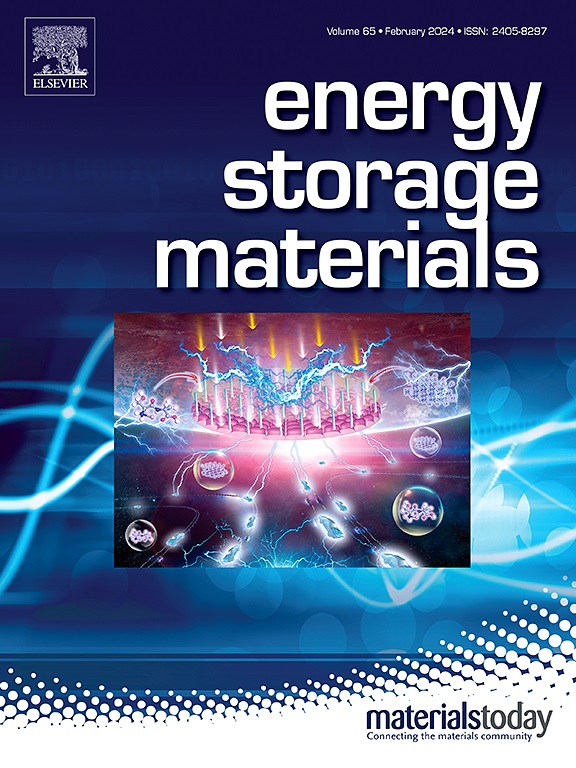Advanced Aqueous Electrolytes for Aluminum-Ion Batteries: Challenges and Opportunities
IF 18.9
1区 材料科学
Q1 CHEMISTRY, PHYSICAL
引用次数: 0
Abstract
With the rapid growth in global energy demand, renewable energy has emerged as a promising solution. However, the intermittency and irregularity of renewable energy sources pose significant challenges for next-generation, large-scale energy-storage systems. Aqueous rechargeable batteries with multivalent cations have attracted attention as candidates for grid-scale energy storage because of their high energy densities enabled by their multi-electron redox reactions, low cost, operational safety, and environmentally benign nature. Among such batteries, rechargeable aqueous aluminum-ion batteries (AAIBs) show promise, offering high gravimetric and volumetric capacities (2981 mAh g−1 and 8056 mAh cm−3, respectively) through a three-electron redox process. However, the practical application of AAIBs remains constrained by several critical challenges, including parasitic chemical reactions between the Al anode surface and the electrolyte, sluggish reaction kinetics of Al³⁺ ions, low reversibility and poor utilization of the Al anode, as well as instability in the crystal structure due to the high charge density of Al³⁺ ions. These issues contribute to poor cycling life and inferior rate performance in AAIBs. To address these limitations, research has focused on advanced strategies, such as the design of aqueous electrolytes to extend the output voltage window and improve the electrochemical stability window (ESW), pre-addition or pre-intercalation of multivalent ion, and structural optimization of active materials to enhance kinetics with electrolytes. This review highlights the latest progress in the field of advanced aqueous electrolyte design, covering approaches such as metal alloy strategies, eutectic engineering, amorphization, electrolyte additive modulation, hybrid electrolyte optimization, and surface modification technologies. These strategies are employed to control the overpotential and reduce the polarization–voltage gap to achieve high Al plating/stripping reversibility in AAIBs. Furthermore, the challenges, limitations, and promising pathways for enhancing performance in advanced aqueous environments are discussed. Finally, critical challenges and prospects for advanced aqueous electrolyte design and anodic surface modification strategies in AAIBs are proposed to inspire future research directions.

求助全文
约1分钟内获得全文
求助全文
来源期刊

Energy Storage Materials
Materials Science-General Materials Science
CiteScore
33.00
自引率
5.90%
发文量
652
审稿时长
27 days
期刊介绍:
Energy Storage Materials is a global interdisciplinary journal dedicated to sharing scientific and technological advancements in materials and devices for advanced energy storage and related energy conversion, such as in metal-O2 batteries. The journal features comprehensive research articles, including full papers and short communications, as well as authoritative feature articles and reviews by leading experts in the field.
Energy Storage Materials covers a wide range of topics, including the synthesis, fabrication, structure, properties, performance, and technological applications of energy storage materials. Additionally, the journal explores strategies, policies, and developments in the field of energy storage materials and devices for sustainable energy.
Published papers are selected based on their scientific and technological significance, their ability to provide valuable new knowledge, and their relevance to the international research community.
 求助内容:
求助内容: 应助结果提醒方式:
应助结果提醒方式:


